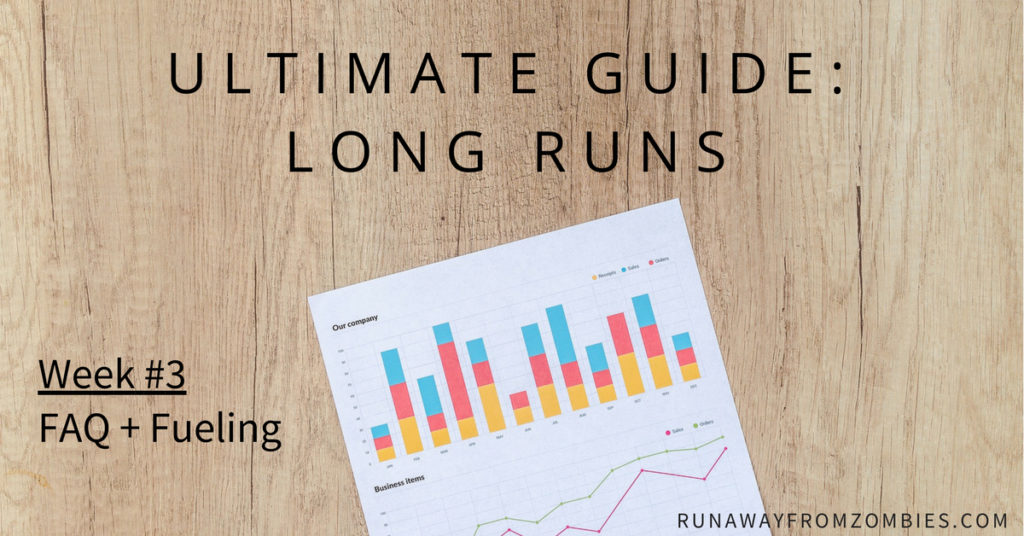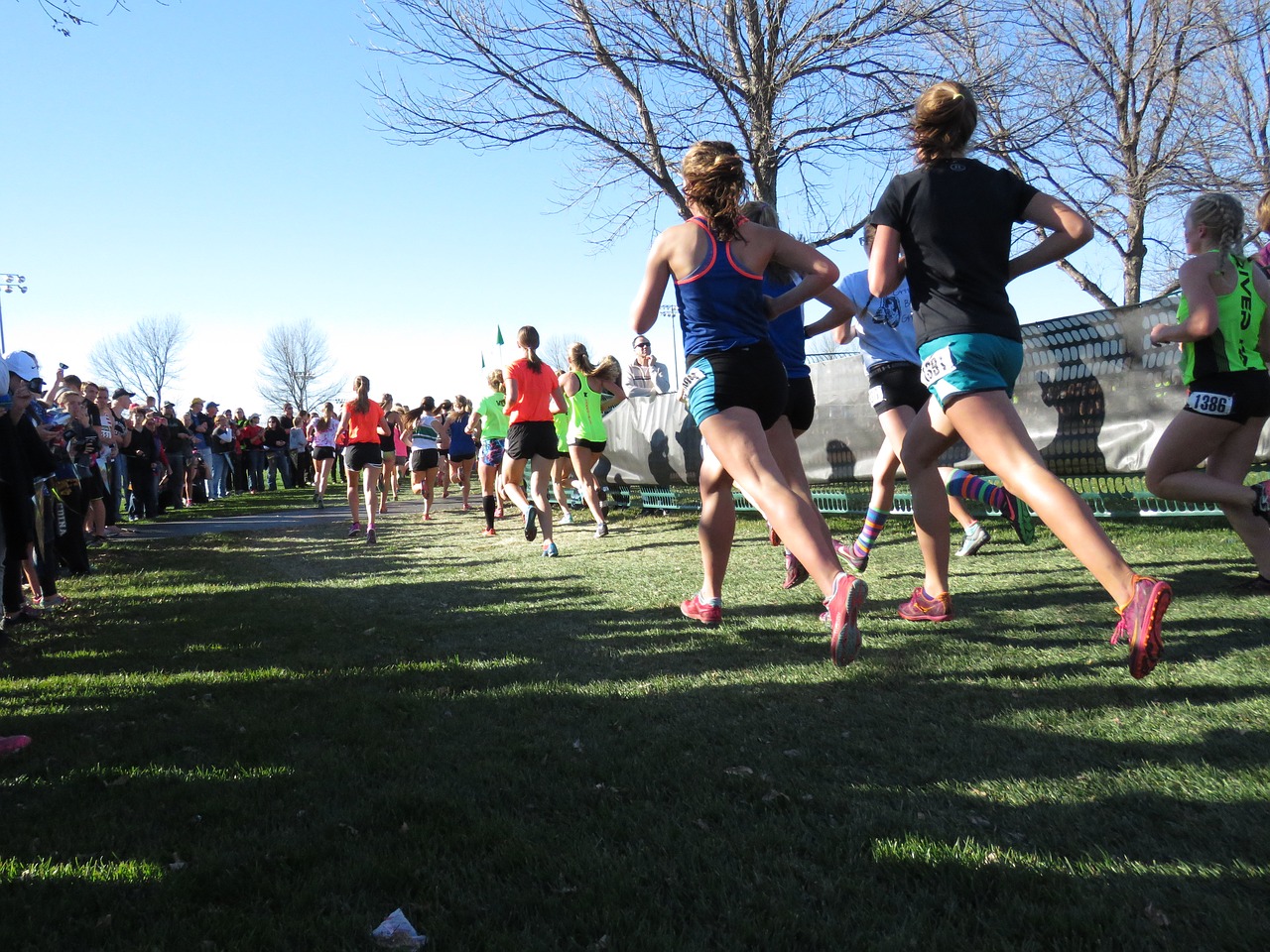As you build your long run, you’ll find they’re more complicated than just added miles. Should you eat something during your long run? Can you split up a long run into two workouts on the same day? Let’s tackle fueling the long run and some miscellaneous questions in the last post in the Ultimate Guide for Long Runs.
Missed part of the guide? Read Week 1 on building long run mileage and Week 2 on pacing the long run and advanced long run workouts.

Ultimate Guide: Fueling the Long Run
For races, it’s clear that fueling improves your performance. With your tanks constantly topped off, your body will freely burn its engines hotter. Otherwise, it will protect its depleting stores, sacrificing speed and performance. For training, opinions vary on how you should manipulate your fuel to trigger body adaptations. Fasting inhibits hormones needed for protein synthesis which can hurt your recovery and strength building, but may encourage your body to burn fat more effectively. We’re still waiting for science to come to a solid conclusion on this one.
Either way, fueling is highly personal and what works for one person might be just the absolute worst for you. Depending on body weight and intensity of the run, you may need 100-250 calories (25-60 grams of carbs) per hour for runs over 75 minutes. This often takes the form of eating a small snack before your run and consuming sports drink and/or energy gels + water throughout your long runs.

Jelly beans – cheap fuel
Experiment to find your strategy
In the last year, I’ve changed how I fuel. When I fueled any run over 90 minutes and only used gels, I felt spikes and crashes in energy and felt dependent on my next sugar fix during my run. Now, I fuel any run of 16+ miles and shorter high quality runs (ie long tempo runs, race pace runs). I eat before my run, frequently sip sports drink during the run, and consume gels + water when needed. These changes led to steadier energy levels for me for both fueled and unfueled runs. So, be sure to experiment with your fueling and find what works best for you.
Practice fueling during long runs
Even if you don’t regularly fuel your long runs, they are perfect time to practice race-day fueling. With practice, you’ll know which foods work best for you and when to eat them. You’ll also master eating while on the move.
After you have a routine down, you can minimize your practice runs. Although I always recommend one practice run each racing season to make sure your tried-and-true is still working and to prime your stomach for eating & running.
Read more:
- Interview with Barbara Casaceli, RD: Are You Eating Well Enough to Run Your Best?
- Mid-Run Fuel Options
- Gluten Free Mid-Run Fuel Options

Ultimate Guide: FAQ about the Long Run
1. Can I split the long run into an AM and a PM run?
While it’s better than missing the run completely, you’ll lose many of the benefits when you split up the run. Most of the magic from the long run come after spending a couple of hours on your feet. When you take a midday break, your glycogen stores will replenish, you’ll rehydrate, and your muscles will start to recover. For the most race-specific training, avoid splitting up your long run. If you do, don’t do it every week; split it unevenly, trying to get as long of a first run as possible; and try to minimize the time between the runs.
2. Isn’t it better to run closer to my goal race pace than slower?
Not necessarily. Running firmly in your aerobic zone will more efficiently train your body and prepare you for race day. I often have clients that want to run fast during their shorter long runs, but when I add distance, they drastically slow down and suddenly require walking breaks. They haven’t been training in the correct zone to prepare them for the added miles. And that’s something you definitely don’t want to discover on race day.
Running fast for your LSD (long slow distance) and easy recovery runs risks overtraining. Save your speed and effort for runs requiring it. Additionally, long runs are beneficial by the amount of time spent on your feet. Training runs are often already shorter than your race distance, so less time on your feet means less conditioning.
Read more: Pace Zones and Their Benefits
3. What should my longest long run be?
Your longest long run will depend on a number of factors.
- Goal race: Marathoners typically should have a long run of 16 miles or more. Half marathoners can make do between 8 mi and 16 mi, depending on…
- Experience: First time half-marathoners could run a 10 mile long run. Experienced half-marathoners looking to improve may run a 16 mile long run.
- Time available: Don’t aggressively increase your mileage just to hit a certain long run distance. Don’t cut into your taper/rest time to fit in one more longest-long run. It’s better to arrive at the race slightly undertrained than with an overtrained, tired, or injured body. Increase your long run appropriately with the time you have available.
- Added difficulty: You may find making your long run harder by adding fartleks or race pace miles may be more beneficial than blindly increasing your long run.
Read more: Choosing Marathon Plans and Writing Marathon Plans
4. What should I do the day before and after?
The long run is a quality run. Don’t run hard the day before or after (unless purposefully doing back-to-back hard runs to train for an ultramarathon or endurance event). Consider an easy run or cross-training the day after to keep your legs moving and recovering without too much added stress. Eat well to encourage physiological adaptations post-run.
Read more: 10 Things to Do After Your Run
5. What about a long run every other week?
A long run every 14 days can be great during the off-season when you aren’t specifically training for a race. During the racing season, 5K and 10K specialists might swap out a long run for another race-specific quality run, cutting down their number of long runs. For those who are injury prone or simply need more recovery time, every other week builds in more recuperation time between bouts.
For those training for the marathon or even half marathon, who would like to increase time between long runs, I’d recommend a 9 or 10-day block schedule, rather than 14. You can also consider adding more frequent cutback weeks. The long run is simply crucial to long-distance races and it will be difficult to effectively prepare with only 2 long runs a month.
Read more: Extending Training ‘Week’ by Training Peaks
6. Tips for unexpected stomach trouble during a fueled race?
If you encounter stomach trouble during your race, have crackers or pretzels ready to help settle your stomach. If you can’t handle any more fuel, swish sports drink in your mouth and spit it out. Your brain will signal to your body that fuel is on the way and will keep the engines burning hot, but it won’t add to your stomach woes.
Any more questions?
If you have a question about the long run, please add them to the comments for me and the other readers to answer.
I hope you enjoyed this series on the long run. Next month I’ll be breaking down the half marathon and in June – the full marathon. See you then!






Thanks for this very informative series. I am looking forward to reading your next two series.
I’m glad you’re liking the series!
You’ve made some really good points there. I looked on the internet for more information about the issue and found most people will go along with your views on this site.